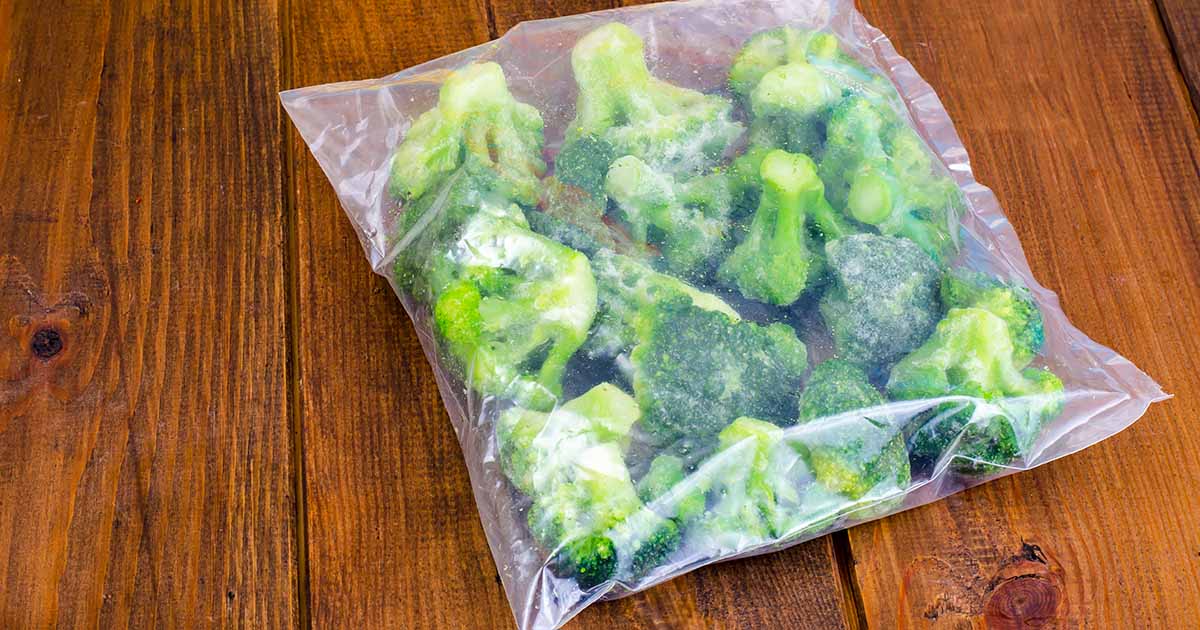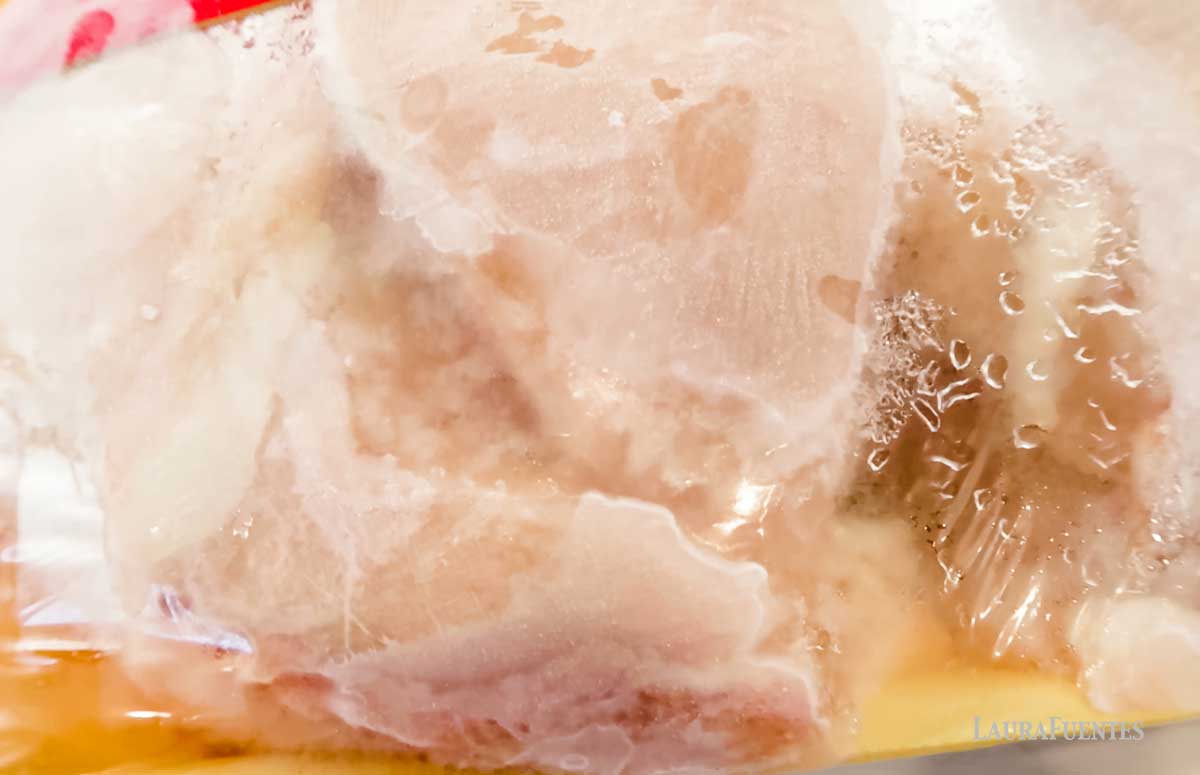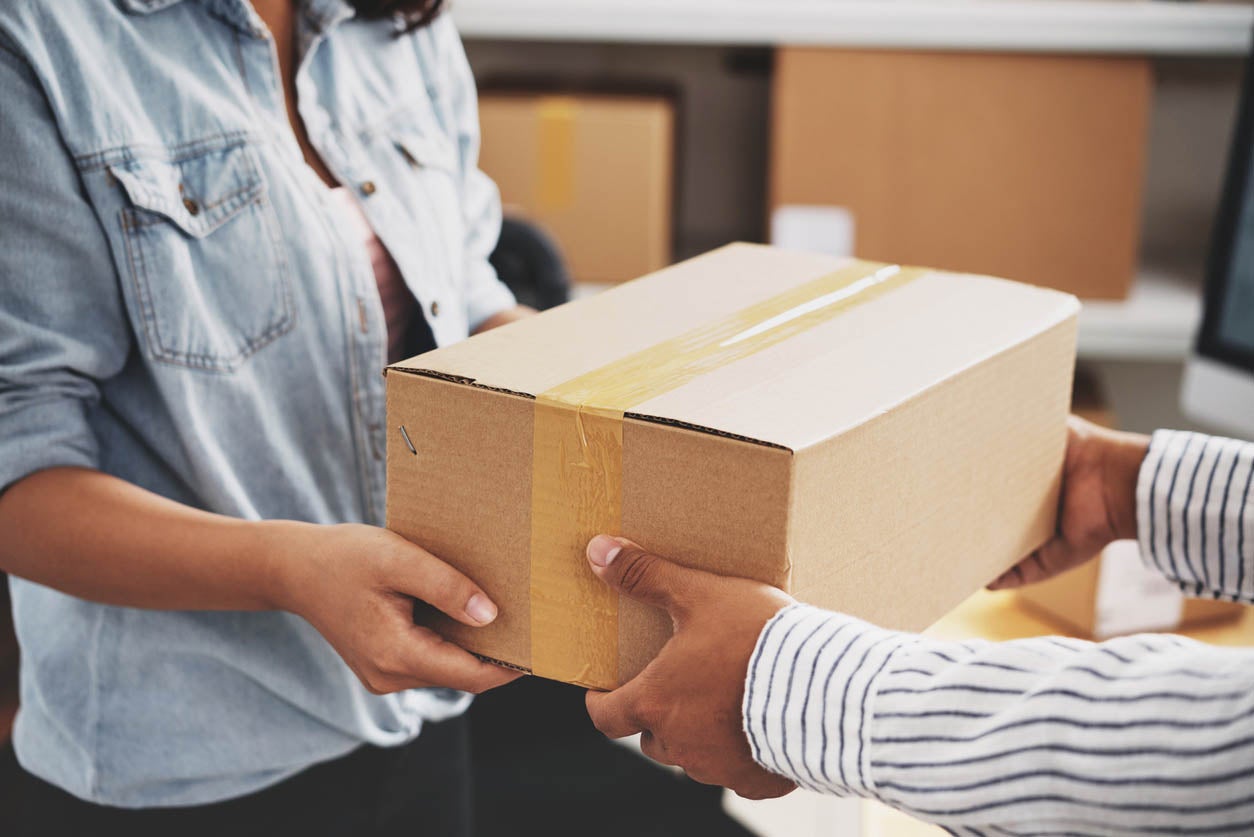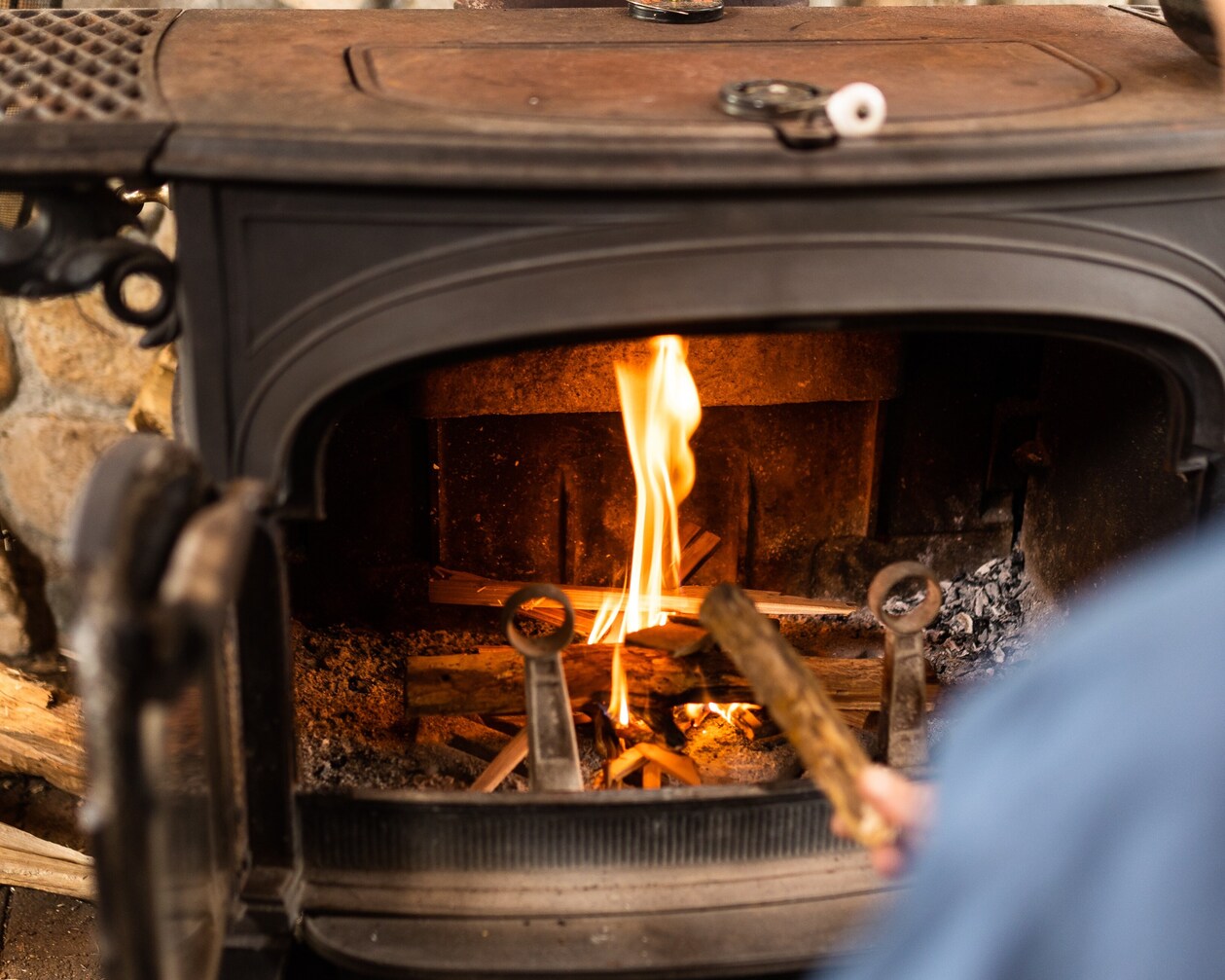

Articles
How Do You Prevent Freezer Burn
Modified: January 18, 2024
Discover effective ways to prevent freezer burn with these informative articles. Learn how to properly store and package your food to keep it fresh for longer.
(Many of the links in this article redirect to a specific reviewed product. Your purchase of these products through affiliate links helps to generate commission for Storables.com, at no extra cost. Learn more)
Introduction
Freezer burn is a common problem that many people encounter when storing food in the freezer. It is the result of moisture loss and oxidation caused by improper packaging and storage techniques. This can lead to changes in texture, flavor, and overall quality of the food.
In this article, we will explore what freezer burn is, its causes, and most importantly, provide you with effective tips to prevent it. By following these guidelines, you can ensure that your frozen food stays fresh and delicious for longer periods of time.
So let’s dive in and learn how to protect your food from the dreaded freezer burn!
Key Takeaways:
- Proper packaging, labeling, and maintaining consistent freezer temperatures are essential in preventing freezer burn. Investing in quality packaging materials and organizing your freezer can significantly extend the shelf life of your frozen food.
- Understanding the causes of freezer burn and implementing effective preventive measures can ensure that your frozen food remains fresh, flavorful, and free from freezer burn for longer periods of time. By following the provided tips, you can enjoy high-quality food from your freezer.
Read more: What Does Freezer Burn Do
What is Freezer Burn?
Freezer burn is a condition that occurs when food in the freezer suffers from moisture loss and oxidation. It is characterized by the appearance of dry, discolored patches on the surface of the food. These patches can range in color from white to grayish-brown.
Freezer burn can affect both raw and cooked food, as well as meat, poultry, fish, fruits, and vegetables. It is caused by the exposure of the food to air and fluctuating temperatures in the freezer. Over time, the moisture in the food evaporates, leaving it dehydrated and prone to deterioration.
When food is frozen, ice crystals form on its surface. If the food is not properly packaged to prevent air exposure, the ice crystals can sublimate, meaning they transition directly from solid to gas, without passing through the liquid state. This process causes moisture loss, which leads to freezer burn.
While freezer burn is not harmful to consume, it can significantly impact the quality and taste of the food. The affected areas can become tough, leathery, and have a stale flavor. In severe cases, the entire item may become inedible.
Now that we understand what freezer burn is, let’s explore the factors that contribute to its occurrence.
Causes of Freezer Burn
Several factors contribute to the occurrence of freezer burn. Understanding these causes can help you take preventive measures and ensure your food stays fresh in the freezer.
1. Improper Packaging: Improper packaging is one of the main culprits behind freezer burn. When food is not tightly wrapped or sealed in airtight containers, it is exposed to air, leading to moisture loss and oxidation. It is crucial to use quality packaging materials designed for freezing, such as freezer bags, freezer-safe containers, or vacuum-sealed bags.
2. Temperature Fluctuations: Fluctuating temperatures inside the freezer can worsen the effects of freezer burn. When the temperature rises and falls, the ice crystals on the surface of the food can melt and refreeze, causing moisture loss. To prevent this, make sure to maintain a consistent temperature in your freezer and avoid frequent opening and closing of the door.
3. Length of Storage: The longer food stays in the freezer, the higher the chances of freezer burn. Quality deterioration is inevitable over time, even with proper packaging. To minimize the risk, label your frozen items with the date of freezing and prioritize using older items first.
4. Air Exposure: Properly sealing the food, whether it is in a bag or container, is crucial to prevent air exposure. Even a small opening can allow air to enter, leading to moisture loss and freezer burn. Take the time to eliminate any excess air before sealing, or consider using vacuum-sealing techniques to remove air completely.
5. Poor Quality Packaging Materials: Using low-quality packaging materials can also contribute to freezer burn. Thin plastic wraps or containers that are not freezer-safe may not provide sufficient protection against moisture loss and air exposure. Invest in quality packaging materials that are specifically designed for freezing.
By understanding the causes of freezer burn, you can now take the necessary steps to prevent it. In the next section, we will discuss some effective tips to keep freezer burn at bay.
Tips to Prevent Freezer Burn
Preventing freezer burn involves proper packaging and storage techniques to protect your food from moisture loss and oxidation. By following these tips, you can ensure that your frozen items remain in optimal condition:
1. Use Quality Packaging Materials
Invest in high-quality freezer bags, airtight containers, or vacuum-sealed bags specifically designed for freezing. These materials will provide a barrier against air and moisture, reducing the risk of freezer burn.
2. Wrap Food Properly
When using freezer bags, press out as much air as possible before sealing. For containers, fill them to their capacity, leaving minimal headspace to minimize air exposure. Double wrapping delicate items, such as meat or fish, can provide an additional layer of protection.
3. Label and Date Items
Always label your frozen items with their contents and the date of freezing. This will help you keep track of the storage duration and prioritize using older items first, reducing the chances of freezer burn.
4. Maintain Consistent Freezer Temperature
Ensure that your freezer maintains a consistent temperature below 0°F (-18°C). Fluctuations in temperature can cause ice crystals to melt and refreeze, leading to moisture loss and freezer burn.
5. Avoid Overstuffing the Freezer
Allow proper air circulation inside the freezer by avoiding overcrowding. Overstuffing can obstruct airflow, resulting in inconsistent temperatures and increased moisture loss.
Read more: How To Get Rid Of Freezer Burn
6. Freeze Food at Its Peak Freshness
Freeze food when it is at its freshest to preserve its quality. Avoid freezing items that are already past their prime, as they may deteriorate more quickly and develop freezer burn.
7. Keep Freezer Door Closed
Avoid frequent opening and closing of the freezer door, as this can cause temperature fluctuations. Open the door only when necessary and retrieve items quickly to maintain a stable environment.
8. Rotate Items Regularly
Periodically reorganize the contents of your freezer and rotate items to ensure that older items are used first. This will help prevent items from being forgotten and languishing in the freezer for too long.
By following these tips, you can significantly reduce the occurrence of freezer burn and enjoy better quality frozen food. Now, let’s delve into specific techniques for proper packaging.
Proper Packaging Techniques
Proper packaging is essential to prevent freezer burn and maintain the quality of your frozen food. Here are some techniques to ensure your items remain fresh:
Read more: How To Tell If Something Is Freezer Burned
1. Use Freezer Bags
Invest in freezer bags, specifically designed to withstand low temperatures. They provide a tight seal, preventing air and moisture from entering. Choose bags that are thick and sturdy to offer maximum protection.
2. Remove Excess Air
Before sealing the freezer bags, remove as much air as possible. Squeeze out the excess air or use a straw to suck it out. This reduces the risk of moisture loss and prevents the formation of ice crystals.
3. Wrap with Plastic Wrap
For items that are prone to moisture loss, such as meats or vegetables, wrap them tightly with plastic wrap before placing them in freezer bags. This double-layered protection helps to preserve their moisture content.
4. Vacuum Sealing
Vacuum sealing is an excellent option to remove air completely and tightly seal your food. It ensures maximum protection against freezer burn and can extend the shelf life of your items. Invest in a vacuum sealer for efficient and airtight packaging.
Read more: How Many Calories Do You Burn In Hot Tub
5. Use Airtight Containers
For items that can’t be easily wrapped or require more protection, opt for airtight containers. These containers should be made of a durable material that can withstand freezing temperatures. Fill the container to its capacity, minimizing air exposure.
6. Consider Freezer Paper
Freezer paper is a great option for long-term storage. It has a plastic coating on one side that provides a barrier against air and moisture. Wrap your food tightly in freezer paper and use tape or freezer-safe labels to secure it.
7. Avoid Aluminum Foil
While aluminum foil is useful for many cooking purposes, it is not the best option for long-term freezer storage. It is not as effective in preventing air and moisture transfer, increasing the risk of freezer burn.
Follow these packaging techniques to ensure that your frozen food remains well protected and free from freezer burn. In the next section, we will discuss how to store food in the freezer for optimal results.
Storing Food in the Freezer
Properly organizing and arranging your frozen food in the freezer is essential to maintain its quality and prevent freezer burn. Follow these guidelines to store your food effectively:
1. Categorize and Label
Group similar items together and label them for easy identification. This will help you locate specific items quickly without having to search through the entire freezer. Consider using freezer-safe labels or marker pens for clear labeling.
2. Maintain Order
Arrange your frozen food in a systematic order, with the oldest items at the front and the newest at the back. This way, you will ensure that items are used in a timely manner to minimize the risk of freezer burn.
3. Keep Raw and Cooked Foods Separate
Store raw foods, such as meat, poultry, and seafood, separately from cooked foods. This helps prevent cross-contamination and ensures proper food safety. Use separate containers or designate specific areas in your freezer for each category.
4. Use Freezer Drawers or Shelves
If your freezer has drawers or shelves, utilize them to create compartments for different types of food. This makes it easier to organize and locate items, reducing the time the freezer door is open.
Read more: How To Freeze Cookies Without Freezer Burn
5. Freezing Individual Portions
If you often have leftovers, consider dividing them into individual portions before freezing. This allows you to thaw and use only what you need, minimizing waste and reducing the chances of freezer burn.
6. Do Not Overcrowd
Avoid overcrowding your freezer, as it can hinder airflow and lead to temperature fluctuations. Leave enough space between items to allow for proper air circulation and maintain consistent temperatures.
7. Store Flat Items Vertically
For flat items like frozen pancakes, sandwiches, or bread slices, store them vertically to save space. This also makes it easier to grab individual items without having to remove the entire stack.
By following these storage tips, you can maximize the space in your freezer and ensure that your food is stored in an organized and efficient manner. In the next section, we will discuss the importance of monitoring temperature and air flow in preventing freezer burn.
Monitoring Temperature and Air Flow
Proper temperature and air flow management in your freezer are crucial for preventing freezer burn and maintaining the quality of your frozen food. Here are some key points to keep in mind:
Read more: How Long Do Candles Burn
1. Set the Freezer Temperature
Ensure that your freezer is set at a consistent temperature below 0°F (-18°C). Most freezers have a temperature control dial or digital display that allows you to adjust the settings. Use a freezer thermometer to regularly monitor and verify the temperature.
2. Avoid Temperature Fluctuations
Avoid frequent opening and closing of the freezer door, as this can cause temperature fluctuations. When warm air enters the freezer, it can lead to moisture loss and the formation of ice crystals. Minimize these temperature fluctuations by retrieving items quickly and closing the door promptly.
3. Maintain Air Flow
Proper air circulation is essential in preventing freezer burn. Ensure that the vents and air passages in your freezer are not blocked by food items. Leave some space between the items and the walls of the freezer to allow air to circulate freely.
4. Defrost Regularly
Over time, ice can build up in the freezer, impeding air flow and affecting the efficiency of the cooling system. Regularly defrost your freezer to remove any excessive ice buildup. Follow the manufacturer’s instructions on defrosting or use the automatic defrost option if available.
Read more: How Do You Freeze Pears In A Freezer Bag
5. Check Door Seals
Inspect the door seals of your freezer to ensure they are in good condition. Damaged or faulty seals can allow warm air to enter the freezer and cold air to escape, disrupting the ideal storage conditions. Replace worn-out seals to maintain proper insulation.
6. Use a Fan (Optional)
If you have a large freezer or notice uneven temperatures inside, consider using a small fan to improve air circulation. Place the fan in a strategic location to distribute the cold air evenly throughout the freezer.
By regularly monitoring the temperature and air flow in your freezer, you can create an optimal environment for your frozen food and minimize the risk of freezer burn. In the next section, we will address some frequently asked questions related to freezer burn.
Frequently Asked Questions (FAQs)
Here are some common questions related to freezer burn and its prevention:
1. Can you still eat food that has freezer burn?
While freezer burn is not harmful to consume, it can affect the texture and taste of the food. The affected areas may become dry, leathery, or have a stale flavor. If the freezer burn is minimal, you can still consume the food after trimming off the affected parts. However, if the food is extensively freezer-burned or has a strong off-flavor, it is best to discard it.
Read more: Why Do Candles Burn
2. Does freezer burn indicate food spoilage?
Freezer burn is not a sign of food spoilage. It is caused by dehydration and oxidation, which do not make the food unsafe to eat. However, the quality and taste of the food may be negatively affected. Properly packaging and storing food can help prevent freezer burn and maintain its quality.
3. How long does it take for freezer burn to occur?
The timeframe for freezer burn to occur can vary depending on various factors such as the type of food, packaging, and storage conditions. In general, freezer burn can start to develop within a few months, but it may occur sooner for more delicate items. Proper packaging and storage techniques can extend the shelf life and prevent freezer burn for a longer period.
4. Can you prevent freezer burn by using plastic containers instead of bags?
Using airtight plastic containers can be an effective way to prevent freezer burn. They provide a strong seal and offer additional protection against air and moisture. However, it is important to ensure that the containers are specifically designed for freezer use and are made of a durable material that can withstand freezing temperatures.
5. Is it necessary to wrap food in plastic wrap before placing it in the freezer bags?
While it is not always necessary to wrap food in plastic wrap before placing it in freezer bags, it can provide an extra layer of protection, especially for items that are prone to moisture loss. Wrapping the food tightly helps to preserve its moisture content and can prevent freezer burn.
6. Can you reseal bags after opening them to prevent freezer burn?
If you have opened a freezer bag, it is recommended to transfer the remaining food into a new bag and remove any excess air before sealing. Resealing the original bag may not provide the same level of protection against moisture loss and air exposure.
7. Can freezer burn be prevented in self-defrosting freezers?
Self-defrosting freezers automatically melt the ice buildup, which can minimize the risk of freezer burn. However, it is still important to properly package and store food to prevent air exposure. Following proper packaging techniques and maintaining a consistent freezer temperature are still essential in preventing freezer burn, even in self-defrosting freezers.
These are some of the frequently asked questions related to freezer burn. By understanding the causes and taking preventive measures, you can ensure that your frozen food remains in optimal condition. Now, let’s sum up our discussion in the concluding section.
Conclusion
Freezer burn is a common issue that can affect the quality of food stored in the freezer. However, with proper knowledge and techniques, it can be prevented. By understanding the causes of freezer burn, such as improper packaging and temperature fluctuations, you can take steps to safeguard your frozen food.
Implementing proper packaging techniques, including using freezer bags, removing excess air, and labeling items, can significantly reduce the risk of freezer burn. Storing food in an organized manner, maintaining consistent freezer temperatures, and monitoring air flow are also vital in preserving the quality of your frozen items.
Remember to check for freezer burn periodically and discard severely affected food to maintain optimal taste and texture. Although freezer burn is not harmful, it can impact the overall eating experience.
By following the tips and guidelines provided in this article, you can ensure that your frozen food stays fresh, flavorful, and free from freezer burn for longer periods of time. By investing a little extra effort in proper packaging, storage, and monitoring, you can enjoy the convenience of having a well-stocked freezer with delicious, high-quality food at your fingertips.
So, take the necessary steps to prevent freezer burn and maximize the longevity and enjoyment of your frozen food. Your taste buds will thank you!
Frequently Asked Questions about How Do You Prevent Freezer Burn
Was this page helpful?
At Storables.com, we guarantee accurate and reliable information. Our content, validated by Expert Board Contributors, is crafted following stringent Editorial Policies. We're committed to providing you with well-researched, expert-backed insights for all your informational needs.






0 thoughts on “How Do You Prevent Freezer Burn”